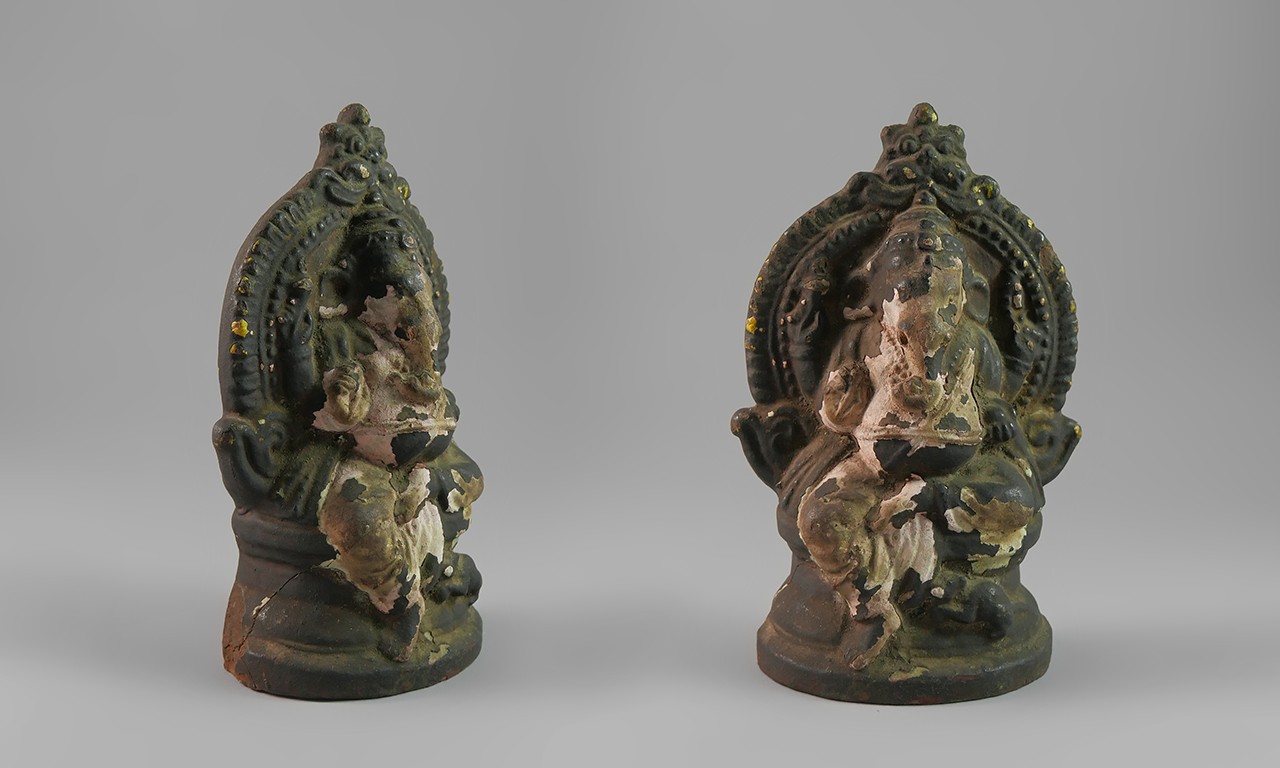 |
Sculpture of Lord Ganesh, 18th Century
India
Wood and paint; 9 x 3 5/8 in.
99.56.21
Gift of Mr. Michael Phillips |
Ushering In
Yesterday’s inauguration came with a message that everyone in this country can get behind: unity. As the United States moves into a new chapter of combating pandemic, financial hardship, and racial inequality, we can all agree that putting in the hard work together is the best way to move forward. Indeed, while the best luck might be hard earned, around the world, cultures have looked to objects, rituals, and beliefs to push the odds in their favor; something which we could surely use now. This blog post ushers in a new president by examining six objects used to forge good fortune around the world.
Bulldozing Obstacles
In the Hindu pantheon there are many deities which one might worship for good luck. Lakshmi has the benediction of being the goddess of love, prosperity, joy, beauty, wealth, and fortune, and one might assume that she is who one might worship when embarking on a new beginning. However, it is Ganesh, a god depicted with a variable number of arms and the head of an elephant, who is most often invoked at the onset of some great thing. He is the god of new beginnings and most Hindu homes have at least one statue which is propitiated when getting married, starting a business, buying a home and perhaps at the beginning of a presidential term. This small wooden sculpture is at least two hundred years old and would have been used for similar purposes.
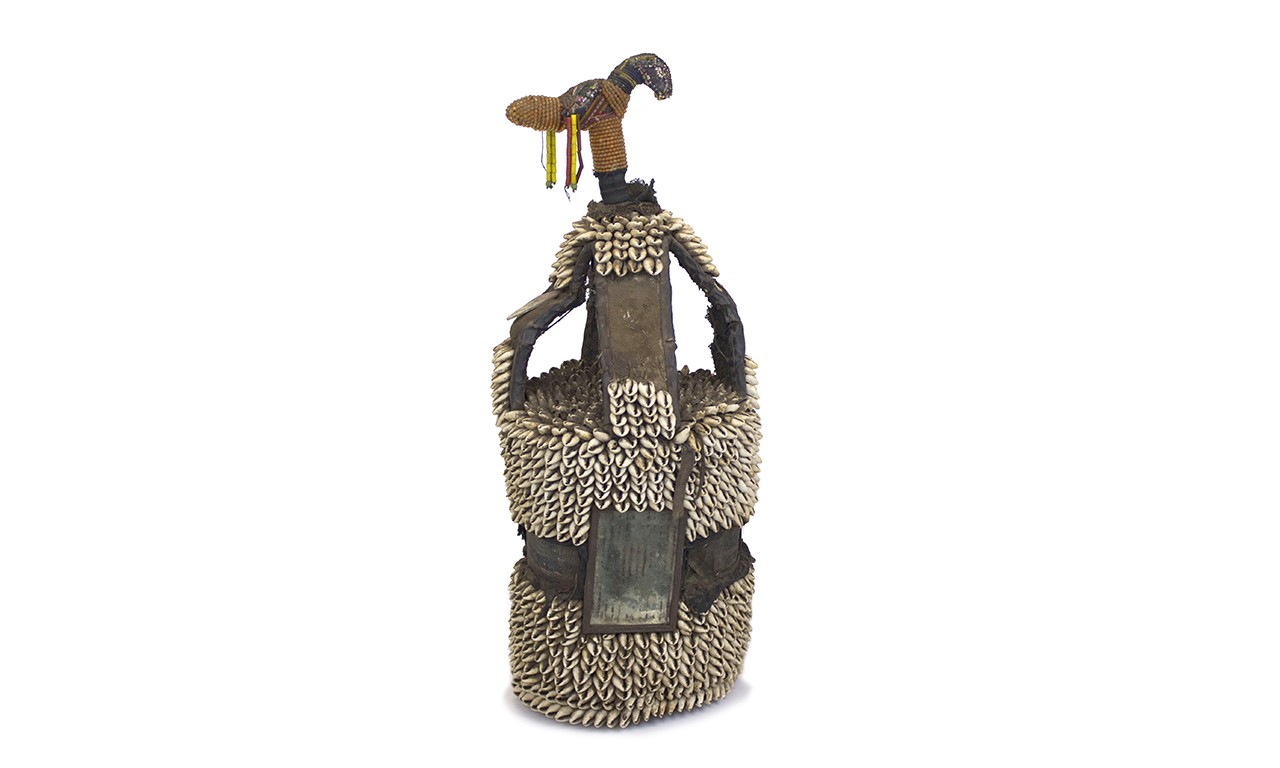 |
House of the Head (Ìlé Orí), 19th to 20th Century
Yoruba culture; Nigeria, Benin or Togo
Cowrie shell, leather, canvas, bead, metal and mirror; 23 1/2 x 9 in.
2004.60.2
Gift of James and Gladys Strain |
Loose are the Beads of the Wealthy
For the Yoruba culture of Western Africa, both good and bad luck were traditionally attributed to whether one neglected or properly presented offerings to a physical housing for one’s fate. The manifestation of one’s destiny is called an ìbòrí and is housed in a larger object called an ìlé orí which is described in more depth in our 2017 post, House of the Head. Much of poor fortune is attributed to having chosen a bad ìbòrí from Àjàlá, the maker of heads in the otherworld. While often considered a permanent pox, properly attending to one’s ìbòrí can alleviate this. Ìlé orí such as this example were also covered in cowrie shells, a currency for the Yoruba, to draw the connection between wealth and one’s good fortune.
 |
Lime Spatula (Daka), early 20th Century
Karatu cultural group; Mogana Village, Collingwood Bay, Oro Province, Papua New Guinea, Melanesia
Wood and fiber; 18 × 2 3/4 × 3/8 in.
2015.7.17
Gift of Mr. Michael Hamson |
Betel Luck Next Lime
Lime spatulas or daka were of premiere importance within the Collingwood Bay area, in part because it lacked a system of formalized ancestor worship and as such had no tradition of figural sculpture. Lime spatulas held a deep significance and hallowed respect, signifying status, chiefdom, ownership, and historical record. Always used for their namesake purpose of consuming a mild stimulant made from mixing burnt coral and crushed betel nut, today lime spatulas are most frequently held as heirlooms for protection and good luck and as reminders of deceased family members.
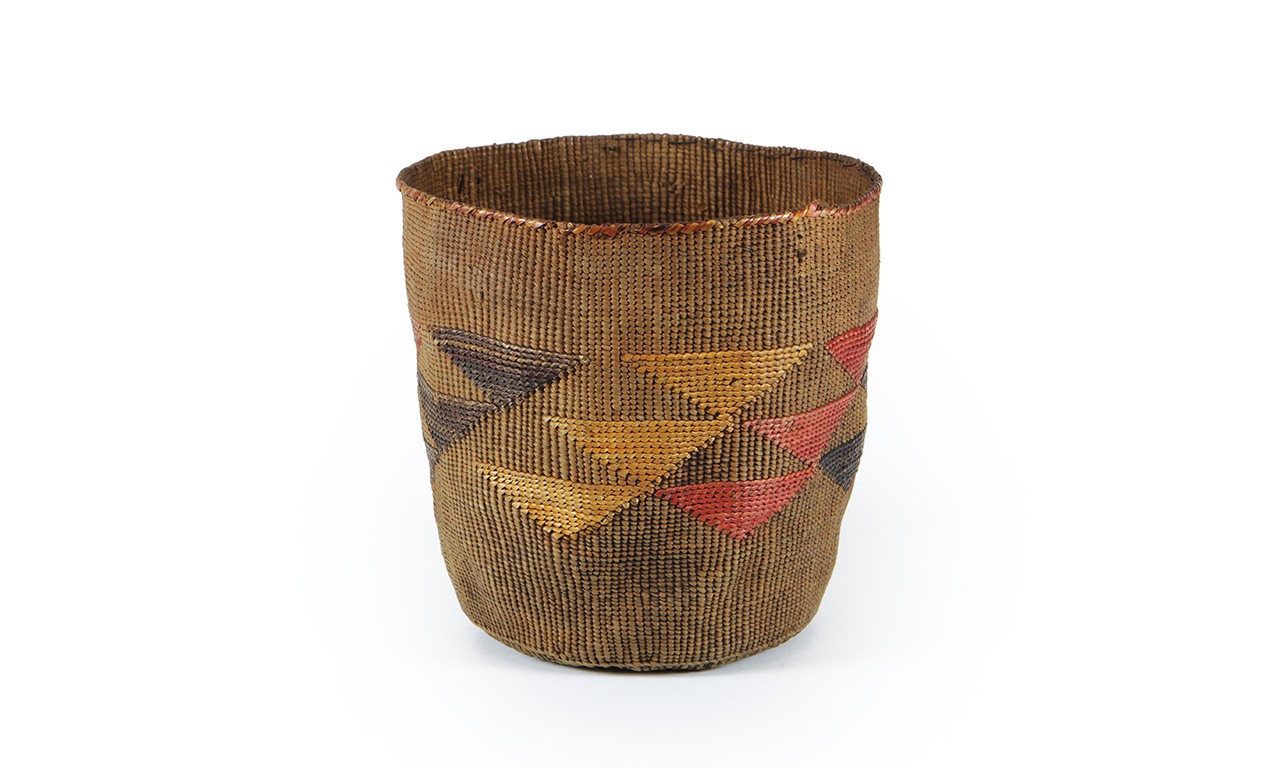 |
Chief’s Drinking Cup (Athle yet), early 20th Century
Tlingit culture; Northwest Coast Region, North America
Possibly spruce root; 4 7/8 × 4 7/8 × 5 in.
2016.14.14
Gift of the Herbert W. Clark Trust |
Thirst for Success
Athle yet, or saltwater drinking cups, were used by Tlingit men—in the case of this exquisite example, a chief—to drink salt water. Used ceremonially and often prescribed by a shaman, it was thought that the drinking of sea water would guard against disease and bring luck in hunting, fishing, and gambling, often in conjunction with a fast of several days. Most athle yet are cylindrical and proportionally taller than this one, though a weave dense enough to be watertight certainly indicates that this cup was used to drink saltwater.
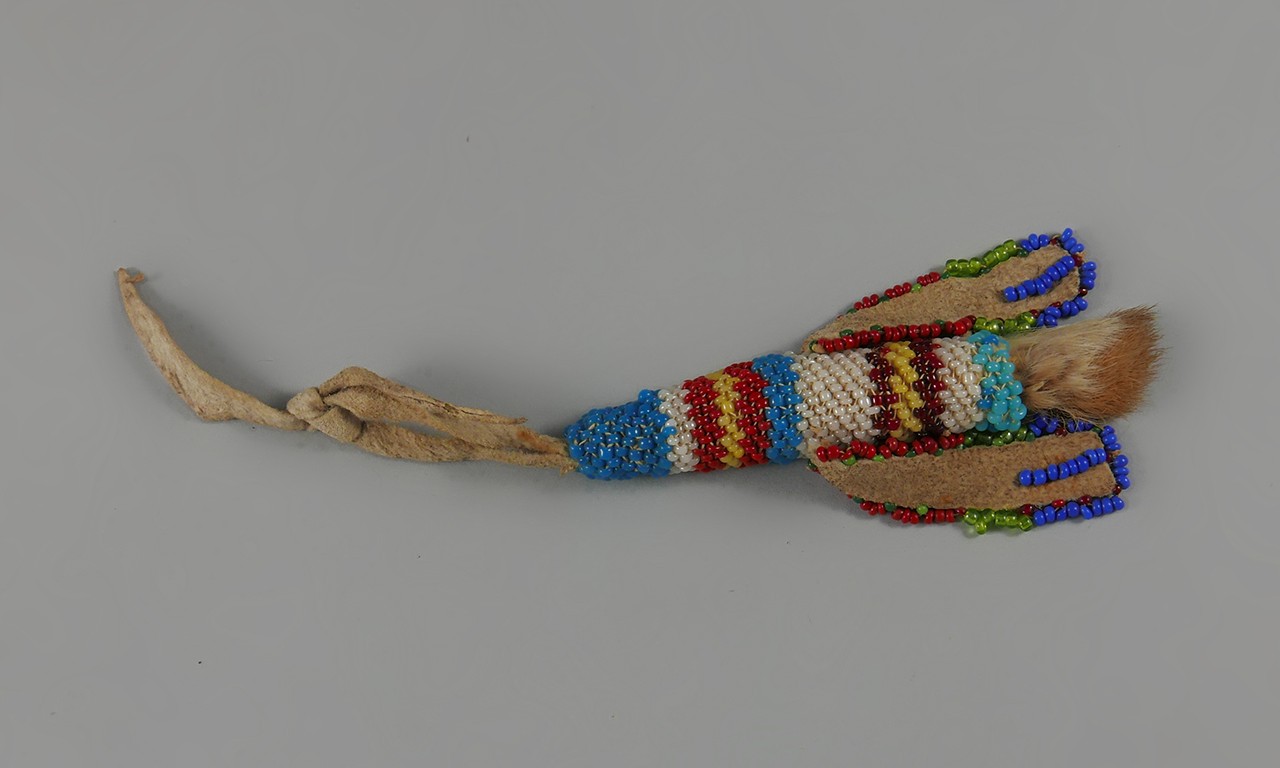 |
Rabbit Foot Charm, mid 20th Century
Zuni culture; New Mexico
Rabbit foot and beads; 3 1/2 in.
20635
Gift of Mrs. Mary J. Newland |
Though it Did Not Work for the Rabbit
Though hardly commonplace anywhere, individuals from cultures around the world carry the foot of a rabbit with them as talismans of good luck. It is not exactly clear where the practice originated, but two theories suggest that it originally came to America from West Africa or that it evolved out of the infinitely more macabre medieval practice of carrying the hand of hanged man. Whatever the case, rabbits’ feet became incredibly popular in the middle of the 20th century. This example was likely made for sale by the Zuni and incorporates elements of their customary beadwork into an object which was ostensibly made for tourists.
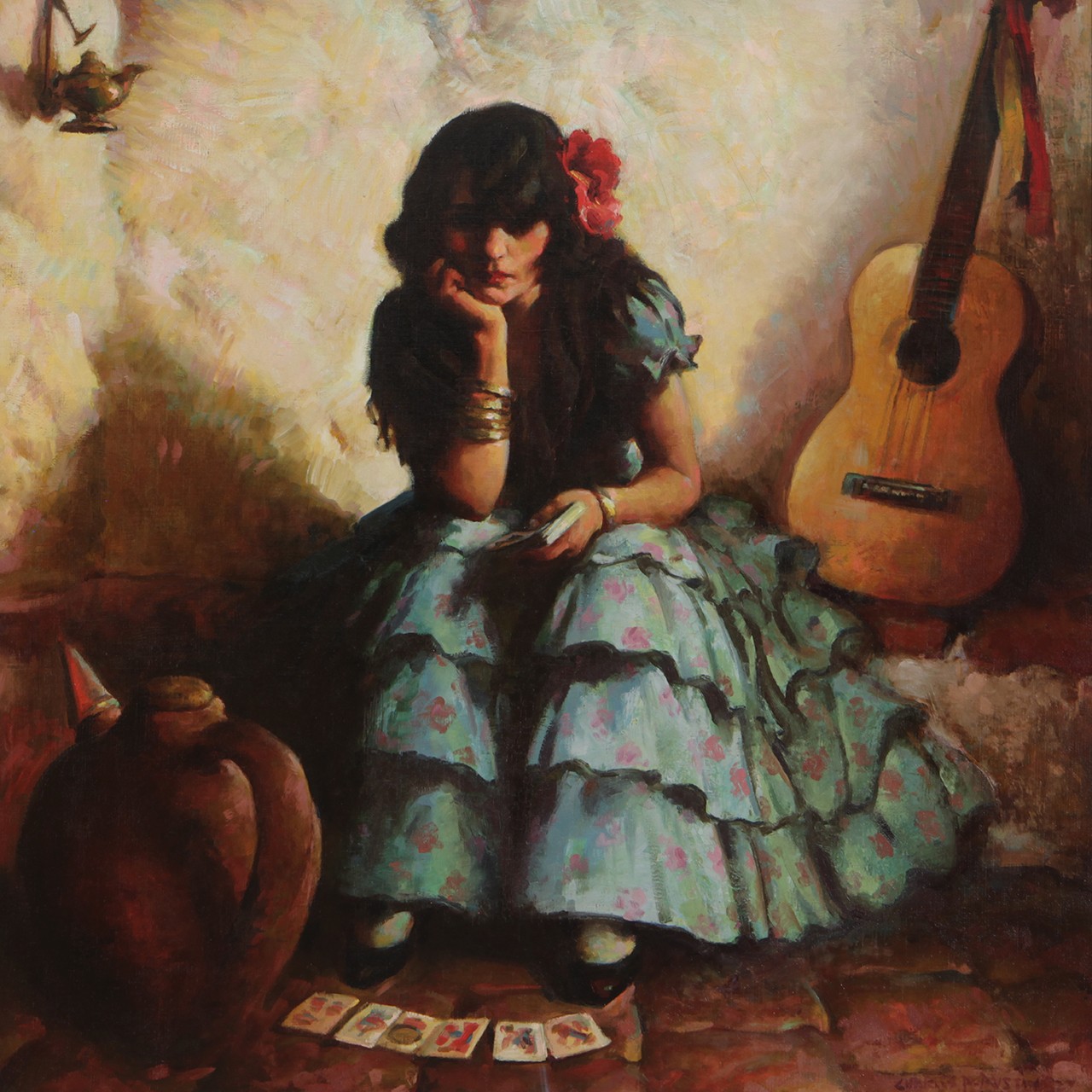 |
La Buenaventura, 1927
Charles Percy Austin (American, 1883 - 1948)
Oil on canvas; 35 1/2 × 35 1/2 in.
32195a
Gift of Mr. Ralph J. Steven |
The Sun (XIX)
One of the Bowers Museum’s most iconic paintings also comes to mind when discussing good fortune, as its title happens to translate to that exact phrase. Charles Percy Austin painted La Buenaventura in 1927, using his wife, Martha Austin, as a model for the tarot card reader depicted. Entertainments like fortune telling and flamenco were staged for tourists during pageants and fiestas at the California missions. Here's to the next four years being a good reading!
Text and images may be under copyright. Please contact Collection Department for permission to use. References are available on request. Information subject to change upon further research.








Comments 2
This blog offers a delightful read and wonderful way to usher in the new year and new administration. As always, Mr. Bustamante fuels one's intellectual curiosity on a weekly basis with his insightful and timely topic selection, highlights of the Bowers Museum's collections, and most of all, his literate and engaging commentary and text. I enjoy and look forward to each week's museum blog.
What a great web page. Interesting to see the rabbit foot charm (20635), which I notice you identify as Zuni. It's true that the Zunis made large numbers of these lucky charms for the mid 20th century tourist market, but I believe your example with the hide tabs to be Ute in origin. You sometimes wee vintage photographs of these charms attached to Ute baby cradles as good luck talismans.
Best wishes from England, UK!